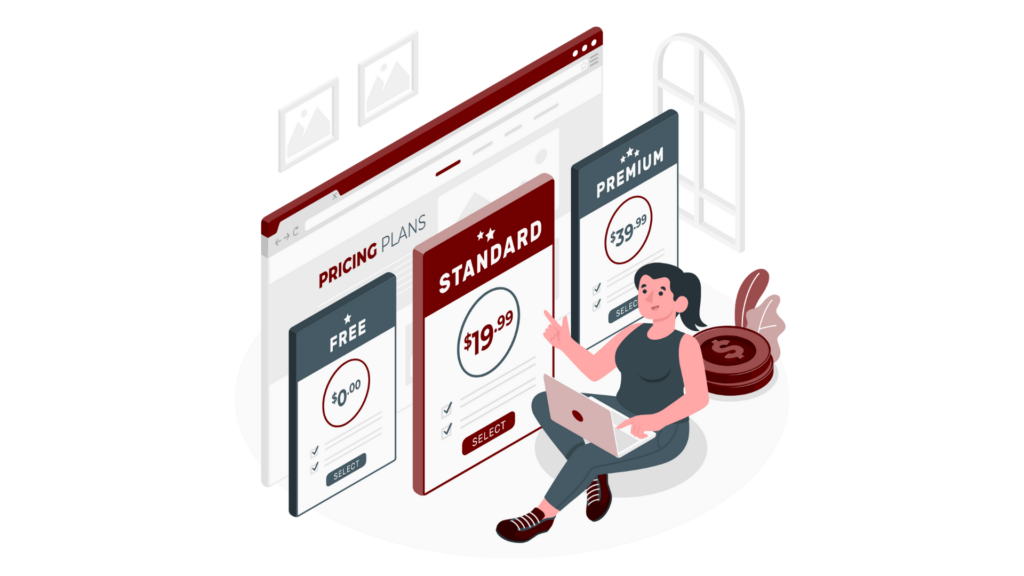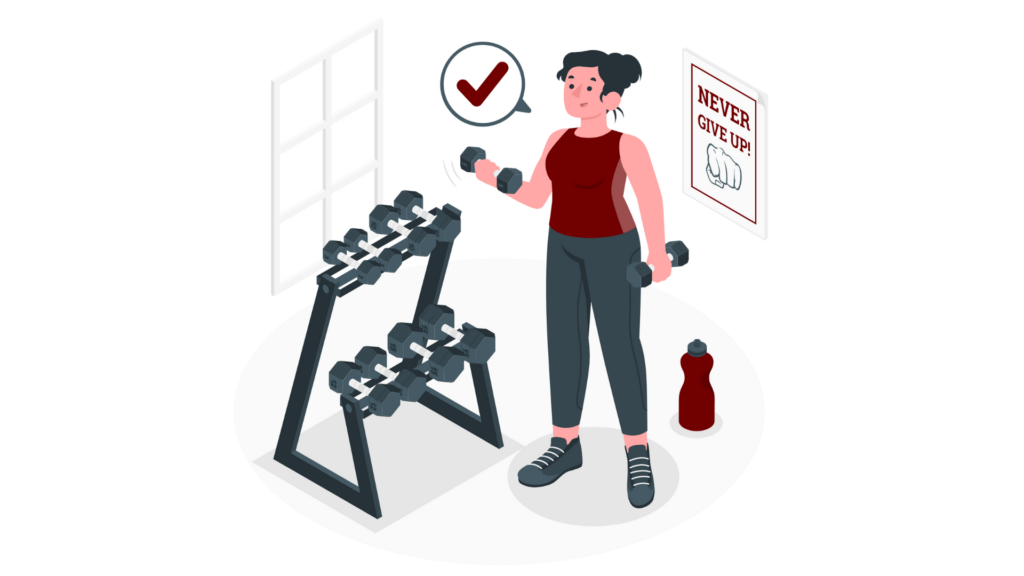As we move through 2024, the fitness industry continues to thrive, driven by an increasing awareness of health and wellness. This has naturally led to curiosity about the financial aspects of running a fitness facility, particularly, how much gym owners make.
The profitability of a gym can vary widely based on its location, size, client base, and the specific services offered. Understanding the income potential for gym owners not only sheds light on the business dynamics of fitness centers but also provides insights into the economic pulse of the broader health and wellness sector.
In managing a successful gym, the effectiveness of the administrative and operational systems in place plays a crucial role. Implementing advanced gym staff management software and gym CRM systems is essential for streamlining operations and enhancing customer relationships. These technologies help in efficiently managing staff schedules, tracking member engagement, and optimizing marketing efforts to increase retention and attract new members.
We conducted a thorough analysis of gym owners’ salaries across states to determine if owning a gym is still a profitable business model in 2024. Since salaries vary widely, we aimed to understand what factors contribute to some gyms generating millions in annual revenue while others barely break even.
Average Gym Owner Salaries (Across States)
How much does a yoga studio make? And other types of gyms? Average salaries for gym owners start at $49,000 per year in North Carolina and go up to $82,275 in Washington. Monthly, this translates to earnings between $4,083 and $6,856. Hourly wages range from $23.56 to $39.56.
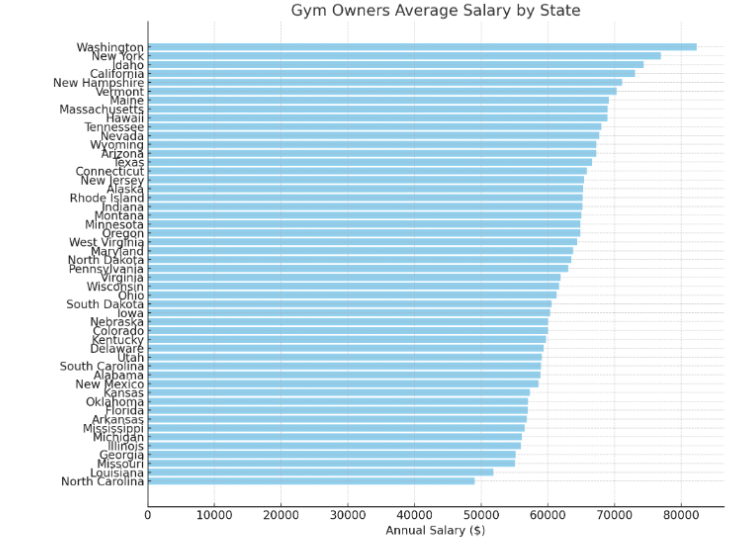
These averages come from anonymous ZipRecruiter surveys, a leading American job marketplace. Keep in mind, however, that the reality of running a gym goes beyond averages. Gym owner’s profits can soar beyond any ceiling or plummet to zero.
How much do gym owners make a year?
Gyms and fitness clubs have been on the up for years, although the period of the coronavirus pandemic has given owners of this type of business a bite. Since then, gym revenues have declined significantly.
According to the Statista website, the industry’s revenue in 2022 was approximately $30.6 billion. Before the pandemic, in 2019, the average revenue in the fitness industry was $45.4 billion. How does it look like currently? And how much will successful gym owners make? According to predictions, revenues will grow, but slightly.
Gym owners pay – national average salary
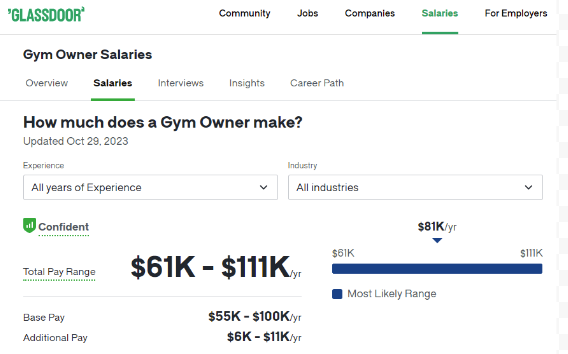
How much money can gym owners make? Are gyms profitable? By contrast, according to Glassdoor, average gym owner income is USD 81 000 a year, if we look at the United States. On the other hand, the same portal reports that an average gym owner’s salary in the UK is around £48,500 per year. A Gym Manager in Germany earns on average € 48,750 per year.
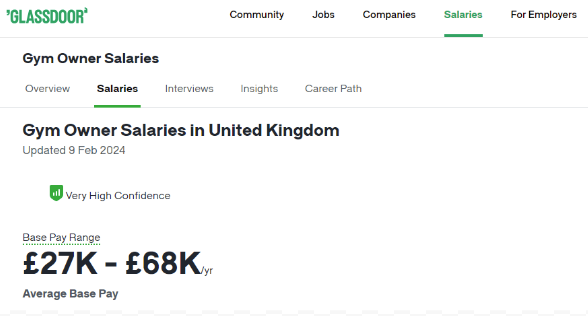
Gym franchise owner salary
Don’t you have the budget to become a gym owner yourself? So, do you wonder how to open a gym franchise? It’s also a money-making solution. How much profit do they get? According to Zippia.com, a gym franchise owner salary in the US reaches an average of $49,588.
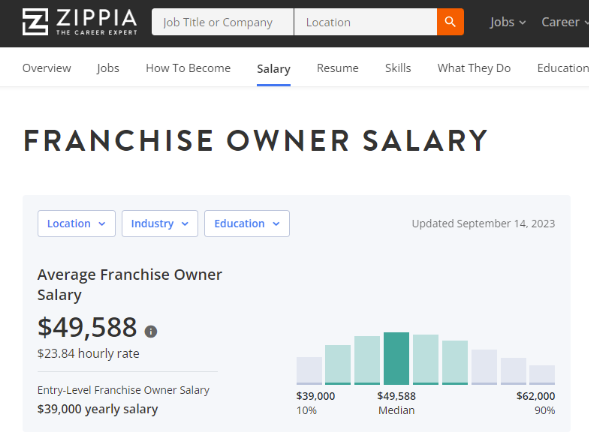
A lot depends on the gym franchise cost that you have to pay, fitness instructors that you have or a place where your gym is located. Therefore, it makes sense to opt for a profitable partner that can help you earn enough and have more revenue stream than just one gym.
What affects a gym owner’s salary?
When fitness entrepreneurs run their gym, they certainly know that the salary will never be fixed. It is dependent on many factors that affect your business. What actually influences the gym owners salary?
#1: Gym location
Where your gym or health club is located makes a difference to how much money you will make as an owner in 2024. So, gym location could be a main part of gym income. The success of fitness services depends on gym members.
A gym located conveniently, having easy access for potential customers, can attract more members and generate higher revenues. Locations with high traffic, near offices, schools or shopping centres, can be attractive from a business perspective. How much gym owners make depends also on the location of your company – whether it is an urban or suburban area.
#2: Gym size
How big your premises are and how vigorously you run your business affects how much money you will make. The size of a gym has a bearing on, among other things:
- rent or mortgage payments,
- media,
- gym equipment.
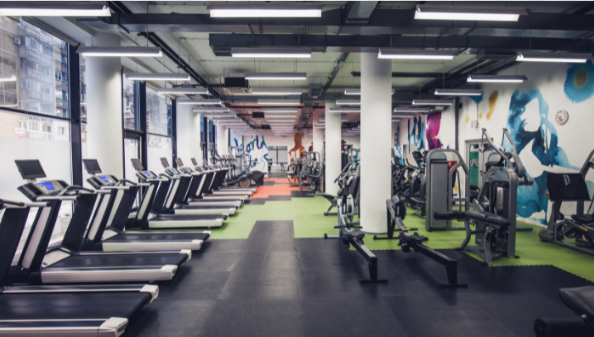
The size of the gym therefore has a direct impact on the average income of the owner. Sometimes customers also prefer to pay more (e.g. for a gym pass or classes), but exercise in an intimate place. So a lot depends also on your target group!
#3: Cost of entrance fees for gym members
Let’s not hide – the cost of a subscription for a family of gym members or a single entry to a gym matters. After all, one of the most important sources of income for a gym owner is the number of members. And how do you attract them? With the attractions available in the facility, but also with a competitive price.
#4: Type of facility
A gym owner’s income in 2024 will also be affected by the type of facility they own. CrossFit trainers compared with conventional gym services offer different prices for memberships. Therefore, choosing the type of facility you want to run has an impact on how much you can earn.
Offering a quality service, a well-equipped gym, professional staff and a variety of classes can attract more customers and have a positive impact on a fitness club’s revenue. Investing in up-to-date equipment, maintaining cleanliness and tidiness, and regularly introducing new classes and training programmes can attract customers and increase customer loyalty.
#5: Additional sources of income
Revenues can always be increased, not just by raising the membership prices! Yes, this is a direct way, but not optimal. A good solution is to offer additional services, such as personal training or nutritional advice, which can attract new customers.
Tracking, marketing and adapting to changing fitness trends can be a key factor in a gym’s success. Offering innovative classes and training programs, keeping up to date with nutrition and healthy lifestyle trends, and adapting quickly to changing client preferences can help a gym attract new clients and retain existing ones.
You can also offer personal training sessions with high level fitness instructor. Most gyms also organize fitness challenges to get more members.
#6: Overhead costs of running a gym
The monthly costs of running a gym (known as overhead costs) can run into hundreds of thousands of dollars, depending on the location and scale of the business. A budget is needed for:
- renting or buying a suitable property,
- gym equipment, including the purchase of training equipment,
- employment of staff,
- payment of insurance,
- marketing,
- other business-related expenses.
Once a gym has opened, owners must incur regular maintenance costs such as staff salaries, rent, utilities, equipment maintenance and repair, insurance and other operational expenses. These costs can place a significant financial burden on gym owners, especially when membership numbers are low and the market is competitive.
#7: Investing in gym development
For a gym to grow and remain competitive – and therefore profitable – it is necessary to invest in new technology, fitness equipment, staff training programmes and other initiatives to improve the services offered and the attractiveness of the fitness club to customers. Investing could really increase gym owner salary.
Note: Offering branded programs like CrossFit entails substantial costs. Gyms must pay affiliation fees for brand names like CrossFit, Zumba, Les Mills, etc., and trainers require brand certification, which adds expenses. Despite the significant outlay, these affiliations are crucial for gyms aiming to provide these popular programs.
#8: Competition in the market
The level of competition in the fitness market has a significant impact on a gym’s profitability. Where there is a lot of competition, it can be more difficult to attract and retain customers, which can affect the profitability of the business. It is therefore worthwhile to carefully continually research the market and learn about the competition to keep up to date.
Gym or health club? Which could bring in more money for fitness industry owners in 2024?
There are many fitness facilities. Choosing between which premises you run depends on a number of different factors. So what is worth knowing?
#1: Gym
Standard gyms are most often equipped with a variety of cardio and strength training equipment. They offer, among other things, group classes, the opportunity to exercise with a personal trainer and even a sauna or swimming pool.
Additionally, gyms often charge higher membership fees due to access to a wide range of equipment and classes. This translates into potentially higher earnings, but sometimes also higher costs. To reduce the costs of managing many elements of the offer, consider investing in gym management software.
#2: Boutique clubs and fitness studios
Boutique fitness studios are smaller, specialized facilities that focus on specific activities such as yoga, pilates, or spinning. They are dedicated to smaller, more intimate groups.
Being able to choose different membership packages can attract more customers. With a variety of activities and programs, customers can be more engaged with the fitness club, which can lead to longer memberships and greater loyalty.
#3: CrossFit gym
CrossFit gyms emphasise functionality and often use a combination of weightlifting, gymnastics and cardio exercises. In addition, fitness enthusiasts can benefit from a variety of initiatives such as yoga and Pilates studios and outdoor-run fitness clubs.
CrossFit gyms often charge higher membership fees due to the intensity of the workouts and individual approach. This is probably why a crossfit gym owner salary might be quite satistying usually.
#4: Group fitness classes

Group fitness classes focuses mainly on a specific target group. Therefore, it attracts more clients interested in this particular sport. These types of places often provide a peaceful and friendly environment, attracting people who are fully interested in this form of activity.
Maybe it’s your fitness business model? In some cases, this type of fitness business may have lower operating costs than gyms, which can lead to higher profit margins.
Successful gym owners’ strategies to elevate their brand: step-by-step guide.
You can watch the full video or get the juicy summary here:
Step 1. Do You Have More Time or Money?
- If time, then you should choose one platform and learn it obsessively. Currently, YouTube attracts the most visitors. Once you begin generating cash flow from leveraging this platform, Alex Hormozi an entrepreneur, author, and investor known for his work in the fitness and business sectors) recommends hiring an agency to help you achieve results on other platforms.
Guidance on working with agencies to secure results will be provided in the subsequent steps. - If money, proceed to the next step.
Step 2. Start With a Basic Agency.
They typically charge between $3,000 and $5,000 and are ideal for building a follower base from 0 to 20,000. They will assist you in committing to producing 2 or 3 videos per week, ensuring you grasp marketing fundamentals efficiently. Thanks to their expertise, you’ll bypass the time-consuming trial and error phase.
Step 3. Switch To an Advanced Agency.
If you aim to reach the top 10% in your field, your next step should be partnering with a top-tier agency, which typically requires a $15,000 investment. Don’t worry; this cost won’t bind you for years. Your subsequent move will be to build your in-house content creation team.
For now, you seek the agency’s expertise. To ensure you get it on favorable terms, here’s a secret formula: be upfront and crystal clear with employees of the agency that you’ll be utilizing their expertise only for a specific period. Set clear expectations: ‘I want to learn from you.’
Below, you’ll find the exact wording you can use:

Step 4. Build Your In-House Dream Team of Content Creators.
Build your team of content creators specialized in fitness blogs plus pay an agency for consulting services. Take notes on their advice so you can train your team with it. Your team, having more time and a deeper understanding of your business, is positioned to produce content that surpasses what an external agency could offer.

Key takeaways
- Salaries Range: The average gym owner’s salary varies from $49,000 to $82,275 annually.
- Key Earning Factors: Location, gym size, competition, the owner’s skills, and the gym’s specialization directly impact income.
- Boost Income: Adding merchandise, supplements, and technology-based tools increases revenue.
- Tech Enhances Experience: gym membership app (member app) and gym management software streamline operations improving member satisfaction and cutting operational costs.
- Niche Markets Pay More: Specializing in unique fitness areas attracts dedicated clients willing to pay premium rates.
- Strong Brand Equals Highest Profits: Effective branding and community building provide value upfront which is key to success for a gym owner, according to Alex Hormozi.
- Learn from Agencies: Leveraging agency expertise early on sets the stage for doing things the right way.
FAQ
What is the average revenue of a gym owner?
Revenues from running a gym can vary depending on location, quality of service, brand and other factors. On average, a monthly gym membership fee ranges from $30 to $100 depending on the location and services offered. And it has an impact on gym owner salary!
According to data from the fitness industry, the average revenue per gym member is around $50 per month. This means that a gym with 500 members could generate revenue of $25,000 per month, or $300,000 per year. Does it mean such entrepreneurs become successful gym owners? Yes, it does!
However, it is important to remember that gross revenue does not equal net profit. After deducting all operating costs, staff salaries, taxes and other charges, the net profit for gym owner may be much lower than expected average salary.
What is the profit margin of owning a gym?
A gym owner’s margin can vary widely and depends on a number of factors, such as:
- operating costs,
- gross revenue,
- investment in gym development,
- competitiveness in the market,
- management effectiveness.
In general, profit margins can range from a few to several tens of per cent. Gym owners usually try to maintain a high profit margin in order to be able to cover operating costs, invest in growth and ensure a stable financial base.
How do you turn up the gym revenue? Discover the most profitable gym business model!
The fitness market is competitive – there is no denying that. However, it is definitely worth investing in. Profit margins can be limited by price competitiveness and the requirements to remain competitive in the market.
The changing market makes it difficult to concretely quantify the values of a gym owner company’s profit margin, as it can vary significantly depending on individual circumstances and business strategy.
How can gym owners achieve a healthy profit margin?
By diversifying income streams, reducing overhead costs, building a brand, and optimizing pricing for services and products.
What factors influence the average income of a gym located in different areas?
Location demographics, competition density, and local market demand for fitness services.
Can offering more services lead to more money for fitness entrepreneurs?
Yes, expanding services like personal training, coaching classes, and group sessions can significantly increase revenue.
What strategies help reduce overhead costs in a gym?
Investing in management software and energy-efficient equipment.
How do personal trainers contribute to a gym’s average income?
They attract and retain members through personalized services, leading to higher membership costs and more satisfied customers.
What’s the impact of exercise gear sales on a gym’s annual salary?
Selling branded gear can boost sales and enhance the gym’s brand, contributing to overall profitability.




